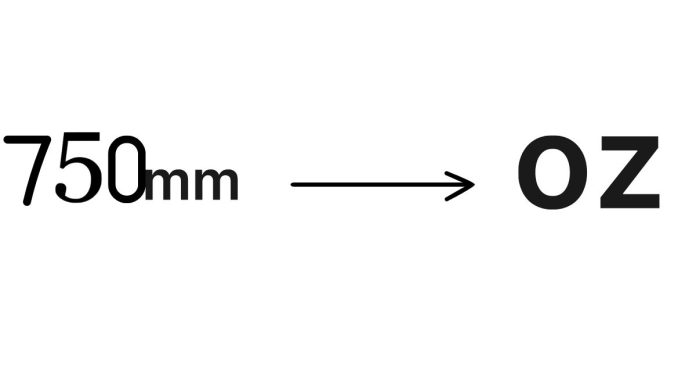When dealing with measurements, especially for beverages like wine, liquor, or water, it’s common to come across milliliters (ml) and ounces (oz). If you’ve ever wondered how many ounces are in 750 milliliters, you’re in the right place! Let’s break it down.
The Short Answer
750 milliliters is approximately 25.36 fluid ounces.
How to Convert Milliliters to Ounces
To convert milliliters to ounces, you can use the conversion factor: 1 milliliter = 0.033814 fluid ounces.
Here’s the formula for the conversion:
Ounces=Milliliters×0.033814For 750 milliliters:
750×0.033814=25.3605 ounces
So, 750 milliliters is roughly 25.36 ounces.
What Does 750 Milliliters Represent?
The 750 milliliter size is common for bottles, particularly in the beverage industry. For example:
- Wine bottles: A standard wine bottle contains 750 ml, equivalent to 25.36 oz or about 5 glasses of wine.
- Liquor bottles: Many spirits like whiskey, vodka, and rum are also sold in 750 ml bottles.
- Water bottles: Some reusable or single-use water bottles come in this size.
Quick Reference: Common Conversions
Here’s a handy guide for similar milliliter-to-ounce conversions:
- 250 ml = 8.45 oz
- 500 ml = 16.91 oz
- 750 ml = 25.36 oz
- 1,000 ml (1 liter) = 33.81 oz
Fluid Ounces vs. Weight Ounces
It’s important to note that the ounces in this context are fluid ounces (fl oz), which measure volume. These are different from weight ounces (oz), which measure mass. For liquids, we typically use fluid ounces.
Why Is This Conversion Useful?
Understanding how milliliters convert to ounces can be helpful in various scenarios:
- Cooking and Baking: Recipes often list measurements in different units depending on the country of origin.
- Beverage Serving Sizes: Knowing how many ounces are in a bottle helps with portion control.
- Travel: When packing liquids for air travel, understanding milliliter and ounce limits (e.g., 100 ml = 3.4 oz) is essential.
750 milliliters is equal to approximately 25.36 fluid ounces. Whether you’re measuring a bottle of wine, liquor, or water, this conversion is useful to know. With this information, you can easily switch between metric and imperial systems without confusion.
Have other measurements you’d like to convert? Let us know in the comments below!
Related posts:
- What does ringing in the ears mean spiritually?
- What Colors Do Blue and Green Make?
- How Long Does Raw Chicken Really Last in the Fridge?
- What are some amazing and memorable Valentine’s Day ideas that will leave a lasting impression?
- What is the definition of ‘friends with benefits?
- What is the difference between a bachelor’s and a degree?



